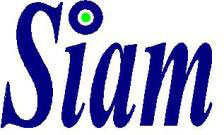
Clients are frequently more interested in having a trademark registered than in determining if another business might have already used that mark. This interest is driven by a belief that registration gives superior rights in the mark to the registrant.
This is not the case; rights to the mark depend on being the first to adopt and use the mark in commerce rather than being the first to file an application to register it and even if the client has successfully registered a mark, that registration will be useless against a prior user of the mark who never bothered to registered it. Registration simply (but importantly) makes it easier to enforce those rights.
Before a company begins using a trademark, it is important to conduct a thorough trademark search. The object of a trademark search is to find out if there are any other marks that are likely to be confused with the candidate mark. Likelihood of confusion requires evaluation of a number of factors, including ofcourse the similarity of the other mark to the candidate mark and the similarities of the goods or services.
Sometimes the identical mark can be used by different businesses as long as the goods and services they use it with are different. On the other hand, if your candidate mark is the same as a famous mark or you find another mark that is used with different but objectionable goods and services, you should choose a different candidate mark.
A trademark search is conducted to determine whether there may be potential conflicts with prior users of the same or similar trademarks. Such a search should include prior registrations and applications on file at the trademark registry, trademark registrations in the various states, unregistered common-law uses such as company name listings, and Internet domain names.
A search serves to ensure the validity of the mark. It is also important to keep in mind that trademark infringement does not require intent. The innocent adoption of a mark that is confusingly similar to that of another is actionable at law.
A trademark search should also be conducted before incorporation under a corporate name. It is a common misconception that “clearing” a corporate name with a Registrar of Companies, by which a corporate name is reserved and a corporation is formed, is sufficient to avoid trademark problems. Such corporate clearance is no guarantee that the name will not be challenged by a prior trademark owner of an identical or substantially similar name.
Once a search indicates that a mark is clear of conflicts, a business ought to adopt it and use it in commerce as soon as possible so that it can acquire trademark rights as soon as it knows it has a good mark.


본 웹사이트는 광고와 서비스 요청을 위한 출처로서 사용할 수 없고 웹사이트의 콘텐츠는 법적 자문으로 간주할 수 없습니다. 독자는 본 정보를 고객 관계를 맺기 위한 초청으로 간주해서는 안됩니다.

© 저작권 2018 Altacit Global. All Rights Reserved.